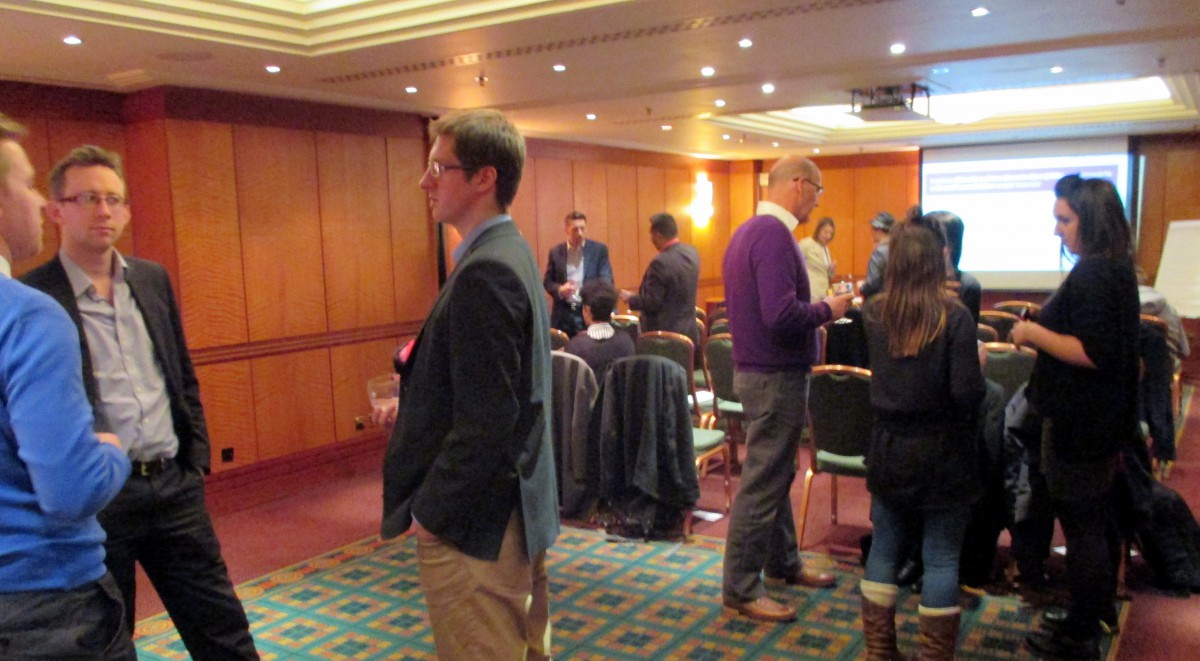Event proposal often evoke mixed feelings among event professionals. Some see them as an opportunity to shine and share their brightest ideas to win a new business, others take a more cautious approach due to risk of copying ideas, and see them rather as time consuming and tedious. One way or another, every event business needs them to grow and prosper.
The current business environment makes things more challenging. It has evolved to require a new set of expectations. For example, budgets are getting tighter, lead time shorter with always increasing delivery standards and new means of communication. As a result, event proposals need to correspond to always increasing expectations.
I teamed up with Perfect Event Proposals to co-host the weekly #EventPlannersTalk Twitter chat about how to write a perfect event proposal. The aim was to address some of the key issues surrounding the process of writing and delivery and how to make them stand out. Dave Ferguson (@PEventProposals), Founder and CEO at Perfect Event Proposals shared with us best practice both for beginners and more experienced planners and we were also joined by @rubain_m, @DetailsQuinn, @ML_Riley, @mark_breen, @goetze_kim, @johnDmartinez and myself @themiceblog.
What are your biggest frustrations when it comes to writing event proposals?
Perfect Event Proposals interviewed over 200 owners of events companies and proposal writing came out on top of biggest frustrations, with some even finding themselves being in “Proposal Writing Hell”. Event professionals expressed that when it comes to proposal writing, main frustrations include formatting images on Word or trying to create a good looking design, especially for non-design experts. As a matter of fact, many event professionals have never been taught how to write proposals.
Given all the work that goes into proposal writing, some vendors will not event take the time to read the entire proposal and it makes it very frustrating for event professionals. Another frustration that was mentioned was matching the style to the client, and especially balancing practical vs. creative/ experiential in the proposal.
Sometimes, there is incomplete information in the brief, important elements are overlooked and given unrealistic time frames for return. Someone expresses that if clients provide more than one budget option is the best approach to tailor made the event proposal.
Lastly, there is very high degree of uncertainty, both regarding whether the planners will get this piece of business and to avoid the idea being stolen, so the frustration is how much time should event professionals really invest in the first stage of the proposal writing.
Do you use a framework or structure when creating your proposals? If yes, please share!
There is no one way to do this, each company does it differently, some use Word, some Power Point etc. Some companies have a general style and a general content plan, including what they want to get across about them and the rest is brief-led.
Perfect Event Proposals shared “The Event Proposal Hierarchy of Needs” (see title photo) to help planners structure their proposals better. Based on the concept of Maslow’s Hierarchy of Needs, this pyramid showcases the key elements that should go into a proposal and what will make it stand out.
The five levels of the proposal hierarchy of need include: requirements, messaging, images, design and innovation. If all are met planners have higher chances for their proposal to get noticed and read through. According to Perfect Event Proposals, only 20% of the industry applies design and only 5% add a WOW element with innovation to their proposal. You can read more about the concept on their blog.
It’s very important to work around client requirements as a starting point and back up with case studies and analytics. The Event Proposal Hierarchy of Needs is a great framework to structure an event proposal and assist with the process.
How important are images and graphics to your proposals?
Most agreed that graphics and images should be a core element to an event proposal to make it stand out, grab client’s attention and can be powerful in communicating event vision. People process information differently so therefore images are important for those who screen through. If proposals are not visually appealing, event planners might event miss out on winning the contract. A picture is worth a thousand words.
What do you do to make your event proposals look visually appealing/high-end?
Event planners can make event proposals visually appealing with graphics, photos, diagrams and event data. Without in-house design this might be a challenge, so using templates can help. Hiring a designer will add extra costs to the proposal.
If event planners want to avoid the traditonal Power Point, it’s recommended to use platforms such as Canva for example. The online design tool enables to create flyers, social media graphics and more.
How do you ensure that the copy you use in your proposals is ‘Client Focused’
An easy trick for this is to make sure that the majority of the paragraphs or sentences do not start with the words I/We/Our, so swap them out for You/Your/You’re. If someone has worked on the client side they’ll always be able to see it from clients’ perspective. It’s recommended to have “multiple eyes on it” and to run it by other team members and put oneself in client’s shoes. It’s also recommended to have an additional call or meeting before the work on the proposal officially begins to better understand and asses client’s commitment
What types of “innovation” can you include in your proposals to make them more outstanding?
To make the proposal stand out, event planners should add an “innovation” element. This can be called also “added value” to outline the innovation. In this section, event planners can suggest unique ways how to take advantage of the venue or the destination. Being seen to go the extra mile makes a massive difference in the client’s eyes!!
Another suggestion is to produce a personalised 60 second video introduction to a proposal. Videos are among the most innovative and they cost almost nothing to produce. Alternatively, showcasing the proposal in an unexpected format can also be seen as innovative. PDFs can be seen as expected and boring, but if a client insist on a PDF, an innovative element can be still added.
Graphic credit: Perfect Event Proposals




No Comments